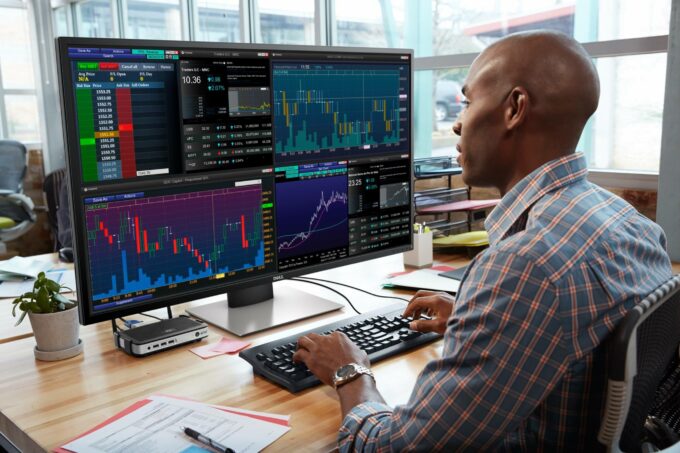Most of the people think that a successful day trader is a multimillionaire who is always relaxing and lounging in a beach town. But it is not the situation for all traders because it is not as easy and simple as it might look from outside. Many people choose to trade as their part-time job and some take it as their full-time job. If you have a good strategy and know about what you want to do, you can earn extra money from it.
According to TheStockDork, If you want to become a day trader but you don’t have the idea that how you can become a successful trader, here are some tips for you.
What is a day trader?

First of all, you need to know what a day trader is. In simple terms, a day trader is a person who buys the securities and sells them on the same day for making a profit. A day trader doesn’t have any open position in the market at the end of the day. For instance, a trader buys stock in the morning and look at the fluctuations to sell them back to gain profit. At the end, the trader doesn’t own any shares in the market.
A day trader is distinct from a swing trader. A swing trader expects profit for the long term, he buys stocks for several days to gain profit from the long-term fluctuations in the stock market. A swing trader might sell some of the securities in one day and buy some securities after some days, the main objective is to give more time to the investment to gain maximum profit. Usually, swing traders hold securities for days or weeks. But it don’t act like this, as they only own securities for one day, however, both types of traders are short-term traders. If you’re considering swing trading instead, read more from VectorVest on some tips and strategies for beginners.
1. Three-day trader assistants: liquidity, volatility, and trading volume

Liquidity allows you to enter and exit the stock at a good price. In liquid instruments, spreads are better and slippage (the difference between the expected and real price of the trade) is smaller. More liquid stocks are easier to buy or sell on the day of the transaction.
The expected daily price is measured based on the fluctuation in the stock market. Higher the risk higher the profit.
High trading volume indicates interest in a stock regardless of which direction the price is heading. Often, an increase in volume indicates the likelihood of a powerful trend emerging.
2. Do proper research about the market and potential platforms
When you decide that you want to become a trader, you must understand how the market works whether it is the forex market, the stock market, or any other trading platform. There is a misconception that a trader can earn money very quickly and spend most of their time relaxing at home but it is not the reality. A trader has to do a lot of research and effort. You must learn from successful traders while doing your research and developing a strategy. If you want success, you must learn from the existing traders who are earning profit successfully.
There are several websites from where you can do your research about the stock exchange market as they provide some additional information.
3. Don’t bet all your money on one trade

Your first step in developing a strategy is assessing how much capital you are willing to risk on each trade. Most successful traders risk less than one or two percent of their account on every trade. It would be a wise decision to not to invest all the money you have because you never know the exact situation, anything could happen in the stock market.
4. Use price patterns to enter and exit
Knowing the price at which you want to enter and exit a trade can save you from wrong trading. One of the best ways to trade throughout the day is to use price patterns. The repetitive formations that you see day after day most often lead to some kind of outcome that you can capitalize on.
5. Describe the entry point criteria for yourself

The entry point at which you buy stocks should not be formed based on intuition but based on a set of conditions that can bring you a positive result. He needs to develop his criteria (entry rules) that will save him from impulsive and thoughtless trades.
6. Decide on your trading style
Depending on your style – scalping, fading, daily pivots, momentum strategy – the targets in the trade may also change. Experienced traders are advised not to mix trading strategies as it is impossible to do several things equally well. Focus on a specific idea.
7. Use stop losses

When you trade with leverage, your capital is much more vulnerable to price spikes than the deposit of ordinary traders who do not use margin lending. Leverage helps to increase trading results, but their value will not always please you. Therefore, the use of stop losses is a decisive factor in day trading.
8. Test your trading strategy
Once you have defined your strategy for trading, start testing it on historical data. Manually go through past quotes, finding an entry, and exit points. “Paper” trading at least in the form of 50-100 trades will allow you to understand whether the strategy will be profitable and whether your expectations from it will come true. If yes, then proceed to trade on a demo account in real-time, and if the strategy after that makes a profit for two months, then you can try it on real capital.
You must understand the risks and challenges

Trading is not a simple thing as there are several areas of difficulty that need to be explored aspiring day traders. If you choose to become a trader, you must understand that trading can’t make rich quickly. Not all your strategies would work, you might face loss sometimes.
To become successful, you must be willing to put in months and years of hard work to understand the markets, strategize and execute your plan consistently over time.









